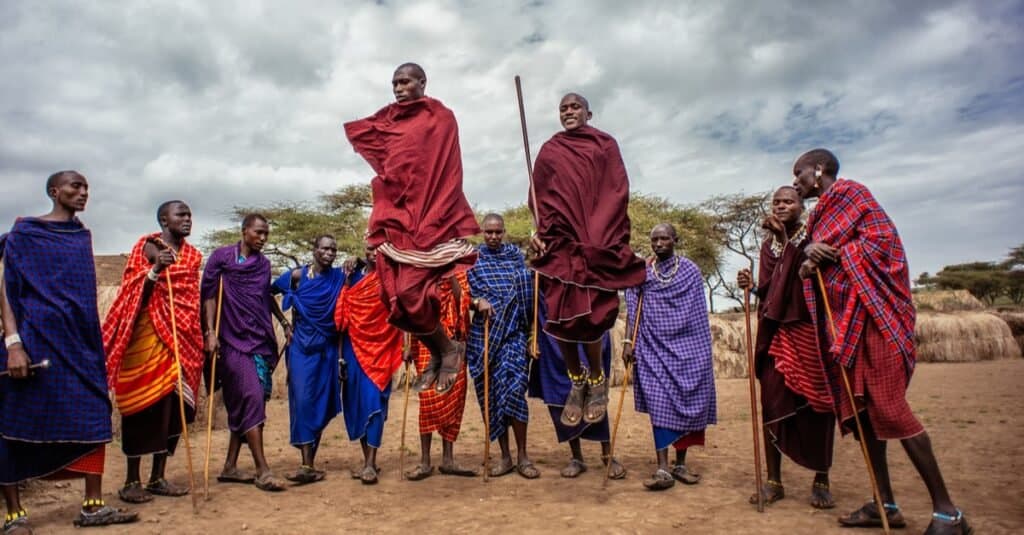It’s easy to take for granted the fact that humans are mammals. If a primate is a mammal and the human is descended from the primate, it follows that a human is also a mammal. But what makes a mammal? Are humans mammals? Why do we think of humans as different from other mammals, and even other primates? These are all questions that might come to mind. To that end, we must explore all of the features of the mammal, the primate, and the human.
Features of mammals
All mammals are vertebrates in the class Mammalia, the name of which means an animal that suckles its young. It refers to female mammals, which have mammary glands for bearing milk. All mammals also have three middle ear bones, a neocortex region in the brain, and either hair or fur. These features distinguish mammals from the other vertebrates, which are reptiles and birds, although all are in the Amniota clade, meaning the young are gestated inside an amniotic sac and without a larval stage. The largest mammalian orders are Rodentia (rodents), Chiroptera (bats), Eulipotyphla (shrews, moles, hedgehogs, etc.), followed by Primates, Artiodactyla (cetaceans and even-toed ungulates), and Carnivora.
On the other hand, there are some mammals that are unusual enough to question the features that classify them as such. The platypus, for example, is an egg-laying mammal, and marsupials are also mammals. Most other mammals give birth to live young, but the platypus lays eggs. Also, while it has fur and the female feeds milk to its young, it sweats milk instead of excreting it through teats or nipples, and it’s one of the few mammals that produce venom.
The marsupial does not belong to the clade of eutherian mammals, which are more closely related to placental mammals. Instead, it belongs to the mammalian infraclass Marsupialia or Metatheria, meaning it carries its young inside of a pouch which also has several teats with which to feed them milk.
Features of primates

©Everything I Do/Shutterstock.com
The order of Primates includes all land-dwelling eutherian mammals. Eutherian refers to therian mammals, which can be either placental or marsupial. It is believed that the first primates lived in trees. Later, some descendants evolved to walk and live on land. All primates have large brains, intelligence, dextrous hands, a shoulder girdle, collarbones, and forward-facing eyes with visual clarity and color vision. Many primates, but not all, have fully or “true” opposable thumbs. But whereas non-human primates have hands on all four limbs, humans only have hands on their arms.
Are Humans Mammals? If so, why?
Education teaches people that human is a type of primate and is related to other primates. A primate is a mammal from the order of Primates, which includes humans, apes, monkeys, chimpanzees, lemurs, tarsiers, and lorises. It is commonly believed that humans share a common ancestor with the chimpanzee and diverged 8 to 6 million years ago.
Like other mammals, the human female gestates its young in an amniotic sac, provides nourishment through the placenta, gives birth to live young, and feeds them milk. Like other primates, the human has dextrous fingers, opposable thumbs, a large brain, intelligence, a collarbone, a shoulder girdle, and forward-facing eyes with visual clarity and color vision.
In terms of the brain, what humans have in common with other mammals is that they have a neocortex, which is a region used for higher-order functions such as sensory perception, language, coordination, and spatial reasoning. The neocortex is part of the frontal lobe. In fact, the mammalian brain is divided into three different regions and is often called the triune brain, which came about as a result of vertebrate evolution.
There’s the reptilian complex, which includes the brain stem and the base of the brain and controls the most primitive, automatic reactions between fight, flee, freeze, or fawn. Then there’s the limbic system, also called the mammalian or paleomammalian cortex, which controls hormones, the sense of smell, emotions, behavior, and long-term memory. Finally, there’s the neocortex.
What makes humans unique?

©costas anton dumitrescu/Shutterstock.com
What distinguishes the human from a non-human mammal isn’t the species. In fact, the modern human only has a 1.2 percent genetic difference from the chimpanzee and a 1.6 genetic difference from the gorilla. As a comparison, consider that the human is 92 percent genetically similar to the mouse. Humans, bonobos, chimps, and African great apes have a 3.1 percent genetic difference from Asian great apes, including the orangutan.
There is also genetic diversity between humans in a specific population, as well as between the various human races. There are three main features that in combination distinguish us from non-human mammals: Our babies are helpless at birth, our skin has far less diversity in microorganisms, and our brains have different proportions. So while genetic differences don’t seem like much, they and other differences actually matter a lot.
The brain is the most important. In humans, the neocortex is called the human brain because it’s different than that of other mammals. The human neocortex is the largest in proportion to the rest of the brain compared to non-human mammal brains, allowing for more complex functions, higher thinking, creativity, self-awareness, and fine motor control.
Conclusion
We learn from an early age that humans are mammals, but we don’t know all the reasons why. The features that make humans similar to other mammals are important because it is common to believe that humans are completely different from non-human animals due to being on top of the food chain and creating civilizations. All mammals share a number of things in common. So, are humans mammals? Yes, a human is a unique creature, but it’s still a mammal.
NEXT UP…
- What Are Mammals: Explained. Do you have more questions about mammals? Here are more details.
- Are Monkeys Primates?
- Are platypuses mammals? You may think the platypus doesn’t seem like your typical mammal, and you would be right!
The photo featured at the top of this post is © michaeljung/Shutterstock.com
Thank you for reading! Have some feedback for us? Contact the AZ Animals editorial team.






